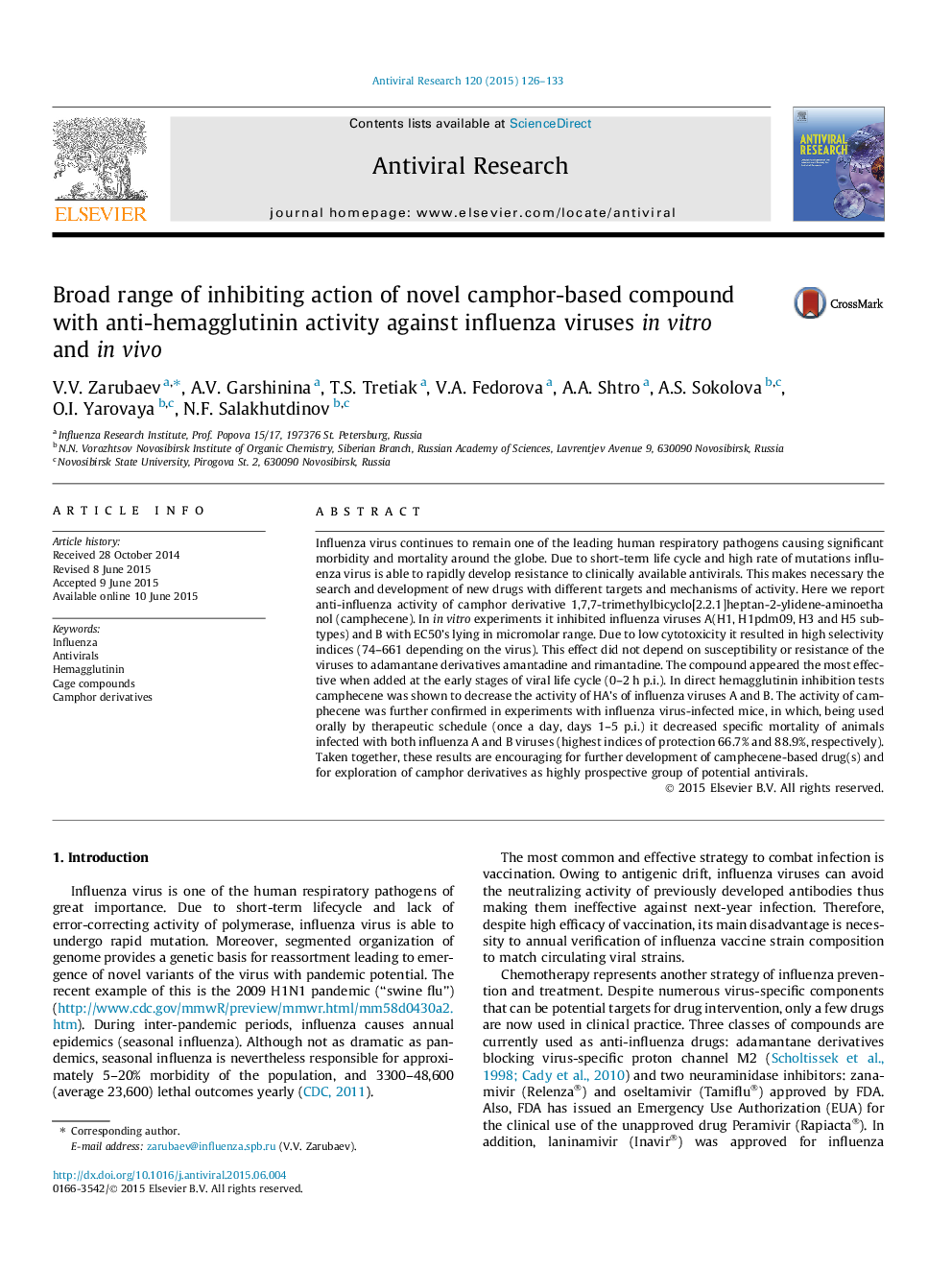| Article ID | Journal | Published Year | Pages | File Type |
|---|---|---|---|---|
| 5821906 | Antiviral Research | 2015 | 8 Pages |
â¢Anti-influenza activity of camphor derivative camphecene is demonstrated against influenza viruses A and B.â¢The compound affects the early stages of viral life cycle (0-2 h p.i.).â¢Camphecene was shown to directly inhibit the activity of hemagglutinins of influenza viruses A and B.â¢Camphecene decreased specific mortality of animals infected with influenza A and B viruses in dose-dependent manner.â¢Camphor derivatives are highly prospective group of potential antivirals.
Influenza virus continues to remain one of the leading human respiratory pathogens causing significant morbidity and mortality around the globe. Due to short-term life cycle and high rate of mutations influenza virus is able to rapidly develop resistance to clinically available antivirals. This makes necessary the search and development of new drugs with different targets and mechanisms of activity. Here we report anti-influenza activity of camphor derivative 1,7,7-trimethylbicyclo[2.2.1]heptan-2-ylidene-aminoethanol (camphecene). In in vitro experiments it inhibited influenza viruses A(H1, H1pdm09, H3 and H5 subtypes) and B with EC50's lying in micromolar range. Due to low cytotoxicity it resulted in high selectivity indices (74-661 depending on the virus). This effect did not depend on susceptibility or resistance of the viruses to adamantane derivatives amantadine and rimantadine. The compound appeared the most effective when added at the early stages of viral life cycle (0-2Â h p.i.). In direct hemagglutinin inhibition tests camphecene was shown to decrease the activity of HA's of influenza viruses A and B. The activity of camphecene was further confirmed in experiments with influenza virus-infected mice, in which, being used orally by therapeutic schedule (once a day, days 1-5 p.i.) it decreased specific mortality of animals infected with both influenza A and B viruses (highest indices of protection 66.7% and 88.9%, respectively). Taken together, these results are encouraging for further development of camphecene-based drug(s) and for exploration of camphor derivatives as highly prospective group of potential antivirals.
